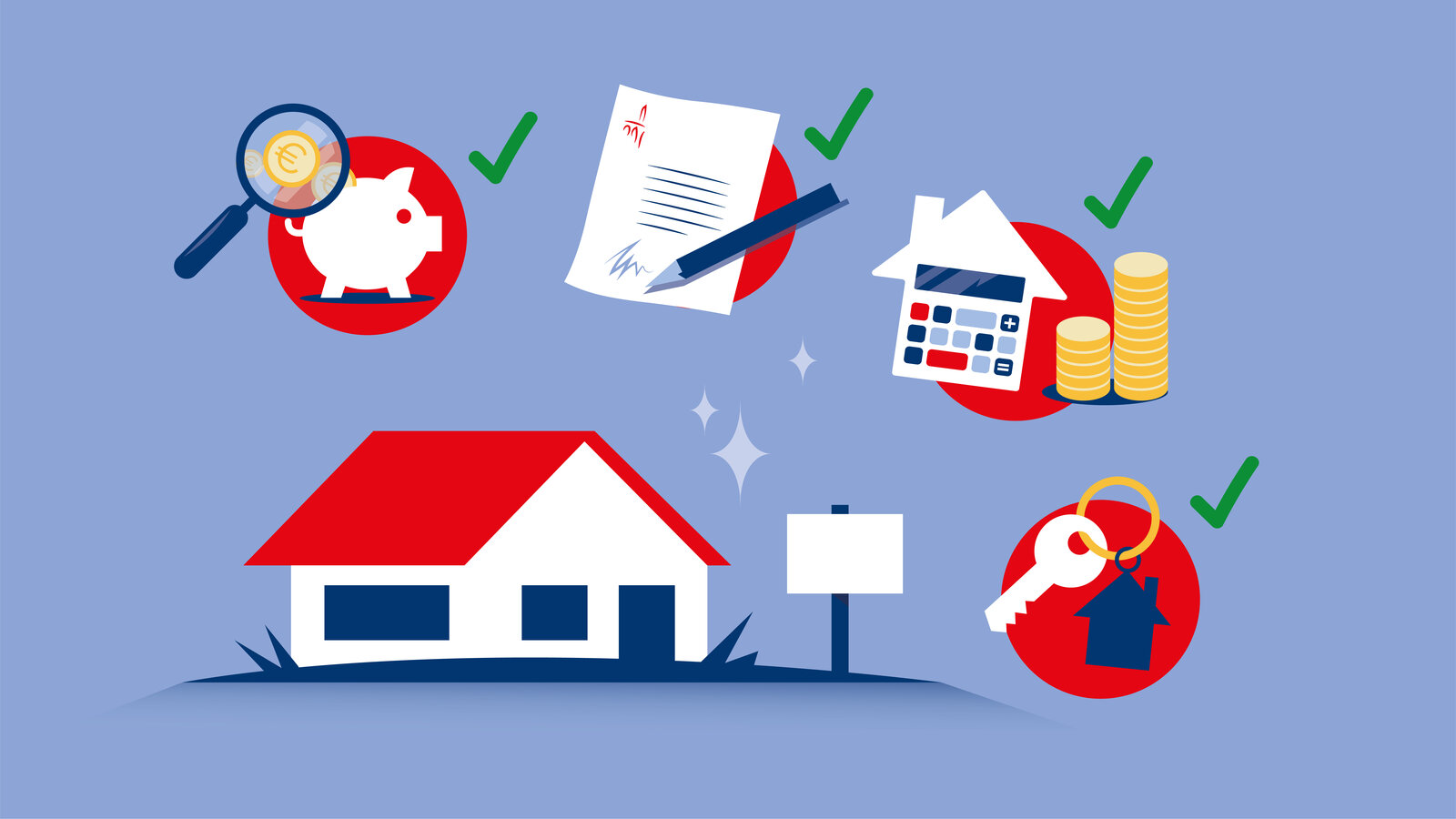30th August 2021
The home loan in three main steps
A few weeks ago, you took a trip with your family to the countryside and came across a magnificent little house for sale. Since then, nobody can stop talking about moving. Despite the house requiring a little renovation work, the entire family is ready to take the plunge. Congratulations! For the occasion, we have drawn up a check-list to help you prepare your loan application.

Before going ahead, it is essential that you make an appointment with your bank to determine the amount you may borrow. This depends on your repayment capacity, your own funds, or any other guarantee you can provide.
Your loan officer will help you with the financing plan and determine the maximum amount you can borrow and as a result, the maximum price you can pay for the new real estate.
The price of your dream house falls easily within your financing plan, thus so far so good! Now, you just need to commit to purchasing the property by signing a sale agreement with the current owner or the real estate agent. The sale agreement is generally valid for 30 days, and where a loan is required, it can be highly useful to include a suspensive condition allowing you to cancel the agreement if your loan application gets refused by the bank.
Your home loan advisor will help you calculate the total amount that you need to borrow. This includes the price of the property and an estimation of associated charges, such as notary fees, renovation costs, and, depending on your situation, the cost of residual debt insurance, which will provide you with coverage in the event of death. On top, there are fixes charges such as the bank’s application fee and any possible mortgage establishment costs. The final borrowed amount corresponds to the difference between your own equity and the total cost of the acquisition.
Flexibility
The variable rate offers greater flexibility, as it allows for early repayment at any time without penalty. In addition, unlike the fixed rate, the variable rate loan is normally released as the work or project progresses.
Security
The fixed rate does not vary during the entire duration of the loan. The monthly payments are therefore known in advance, which helps to stabilise your budget and plan your expenses over the long term. The money from the fixed-rate loan is paid into your account all at once.
For the actual application, you must gather together a certain number of documents, namely :
- the sale agreement,
- your salary certificates and/or the last three pay slips,
- your ID Card,
- estimates for any renovations,
- proof of your own contribution.
Once you have given these documents to the bank, you will receive a definitive loan offer that sums up all the essential information, such as the amount, the rate, the types of insurance chosen, etc.
Once these formalities have been settled with the bank, you just need to sign the deed of sale for the property. The only thing left to do then, is to pack up your things and move in!
Was this article helpful?
